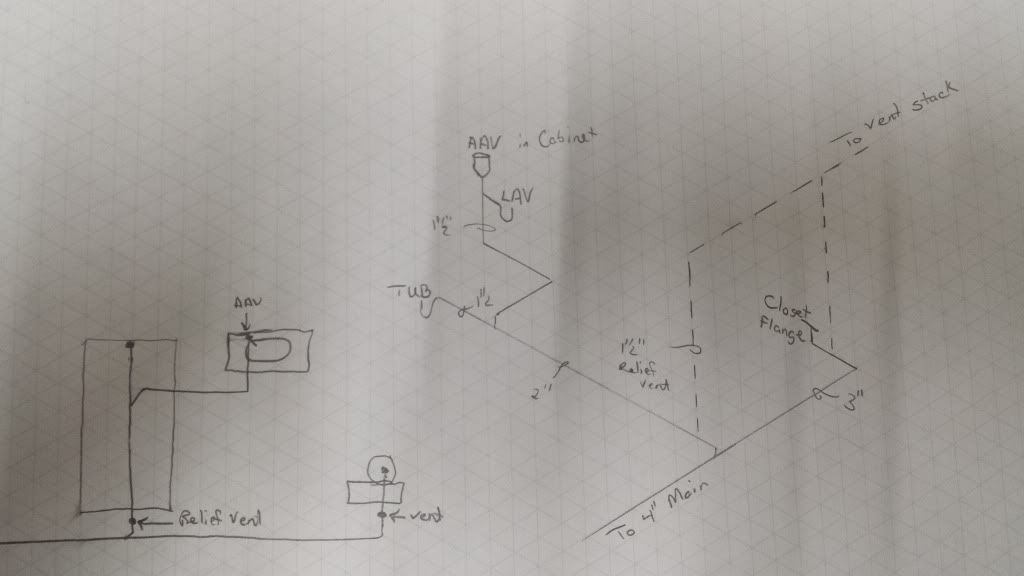Can I vent fixtures where they meet, or just before where their arm meets the main drain line?
Due to existing roof penetrations and stacks, it would be much easier to vent these fixtures on the top side of bathroom rather than on bottom side and running vent lines all the way around the bathroom back towards the top wall.

Due to existing roof penetrations and stacks, it would be much easier to vent these fixtures on the top side of bathroom rather than on bottom side and running vent lines all the way around the bathroom back towards the top wall.






















































![MEISTERFAKTUR drain snake 2.0 [50 FT] - with drill attachment - Ideal plumbing snake for sink and drain unblocking - Solid drain auger for real DYIs! (50 FT - 1/4 inch)](https://m.media-amazon.com/images/I/41VwmTiOsgL._SL500_.jpg)






